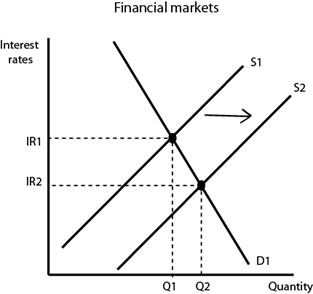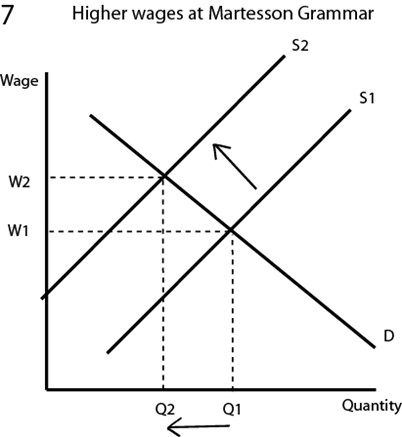Application Exercise 4b:

1) The School operates in the product markets because it is offering a service (i.e. education).
2) It operates in labour markets because a school employs workers. It therefore operates in labour markets by demanding labour services (.e. workers) and teachers willing to work at the school are those who supply the services in that market.
3) It operates in financial markets whenever the school needs to borrow money from financial institutions (e.g. banks). For example, a decision by the school to build a new gymnasium will typically require some funding from a bank. This means it demands money from a bank and the bank supplies money (i.e. lends) to the school. The rate of exchange (i.e. the interest rate) will be determined by the relative forces of demand for and supply of money in the financial system at the time.
4) This is likely to cause the demand for places at government schools to increase. Some of the new students seeking to enrol in the school might be those transferring from Martesson Grammar. Their parents are more likely to consider a public (i.e. government) education more viable than before and therefore decide that it is less worthwhile to continue paying relatively high fees at a school like Martesson Grammar. This is illustrated in the demand and supply diagrams below. [Note that the relatively flat supply curve for public schools reflects the fact that they are notionally free for students to attend, with an increased demand for places having minimal if any impact on the price paid by parents.]

5) If more people are willing to save, it typically means that they will be putting their savings into the financial system in some form (e.g. depositing money in banks). This increases the supply of money in financial markets, pushing the supply curve from S1 to S2, which forces interest rates downwards from IR1 to IR 2.



8) If wages rose to very high levels then it is likely to make it much more attractive for teachers at other schools to offer their services to the school, which results in the supply curve shifting to the right. This will then exert downward pressure on the wages offered by the school. Alternatively, very high wages caused by a lack of supply due to the remoteness of the school) will eventually result in the school making more concerted efforts to make working conditions more attractive which helps to push the supply curve back towards the right and reduce pressure on wages.
